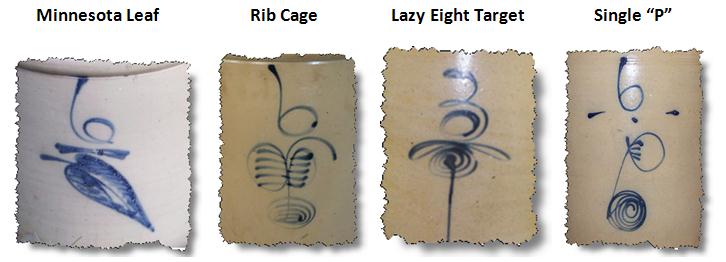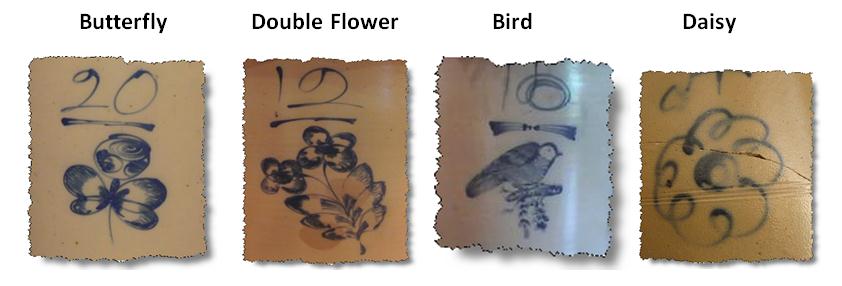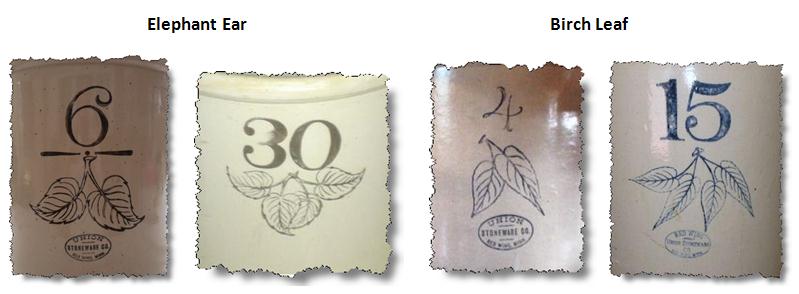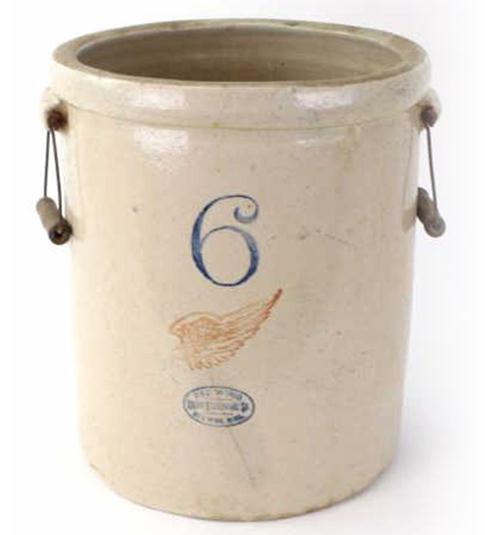Red Wing Stoneware Identification
Red Wing stoneware has been around since the late 1800’s, but it hasn’t always had that symbolic red wing we have all come to know and love. In the earlier years of production, Red Wing potters took great pride in finishing their hand turned pieces with a hand drawn cobalt blue design such as a butterfly or bird. Some of these early pieces are quite rare and valuable, so proper identification is the key to knowing what you’ve found in that storage unit. This article will help identify Red Wing stoneware over their 90 some years of production by covering many of these designs and stamps the potters used to mark their wares.
The Red Wing Stoneware company first began producing utilitarian stoneware in 1877. These early pieces were covered with a rich tan salt glaze and decorated with a beautiful hand drawn image. Here are the many meticulously drawn cobalt images, with names like Target, Lazy Eight and Rib Cage. These images were drawn on crocks, butter churns, water coolers and jugs. 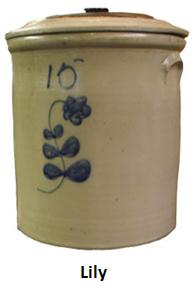
Even with these pictures to identify, it can still be challenging to determine for sure if the stoneware is indeed Red Wing as other stoneware makers used designs similar to these. If you are unsure that your stoneware is Red Wing, you can contact the stoneware experts at the Red Wing Collectors Society by using the “Ask the Experts” link and they will help verify the maker and provide an estimated value.
Side Wall Stamps
Found mostly on earlier salt glazed stoneware, metal stamps we used to impress the company name into the outside wall of the item. These hard to find stamps add even more value to the piece.
 Some of the earlier stoneware pieces were bottom marked as well, adding additional value to the item.
Some of the earlier stoneware pieces were bottom marked as well, adding additional value to the item.
No doubt this piece was made by a Red Wing Stoneware Company potter.
The Start of the Stamped Design
Around 1896, salt glaze was replaced by a creamy colored zinc glaze and the hand drawn cobalt designs gave way to stamped designs. The first two stamps to be used where the Elephant Ear and the Birch Leaf pictured below. They were stamped as single pairs or double pairs. With the use of stamps, it became much easier to identify a crock as Red Wing.
The Red Wing Arrives
Around 1906, the elephant ear and birch leaf stamps were replaced with the now familiar red wing stamp which was used until the pottery plant closed in 1967. The early red wing stamps were six inches in length. As time went on, the wing size was reduced to four inches and then finally to two inches.


